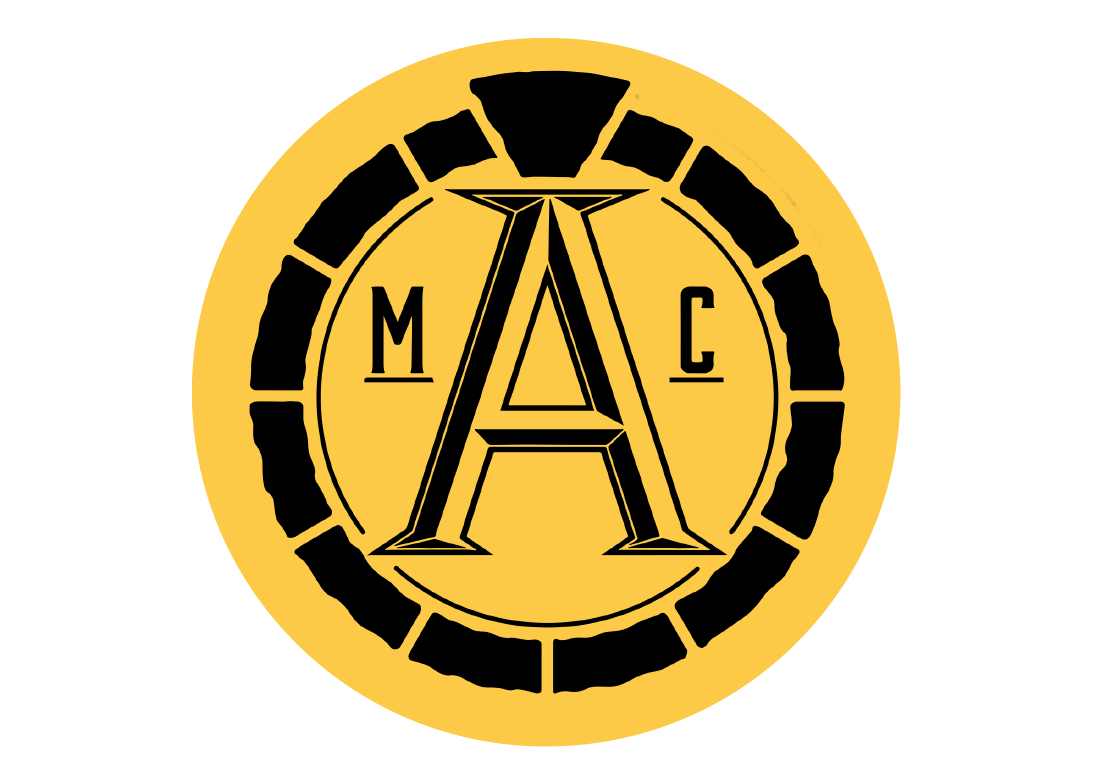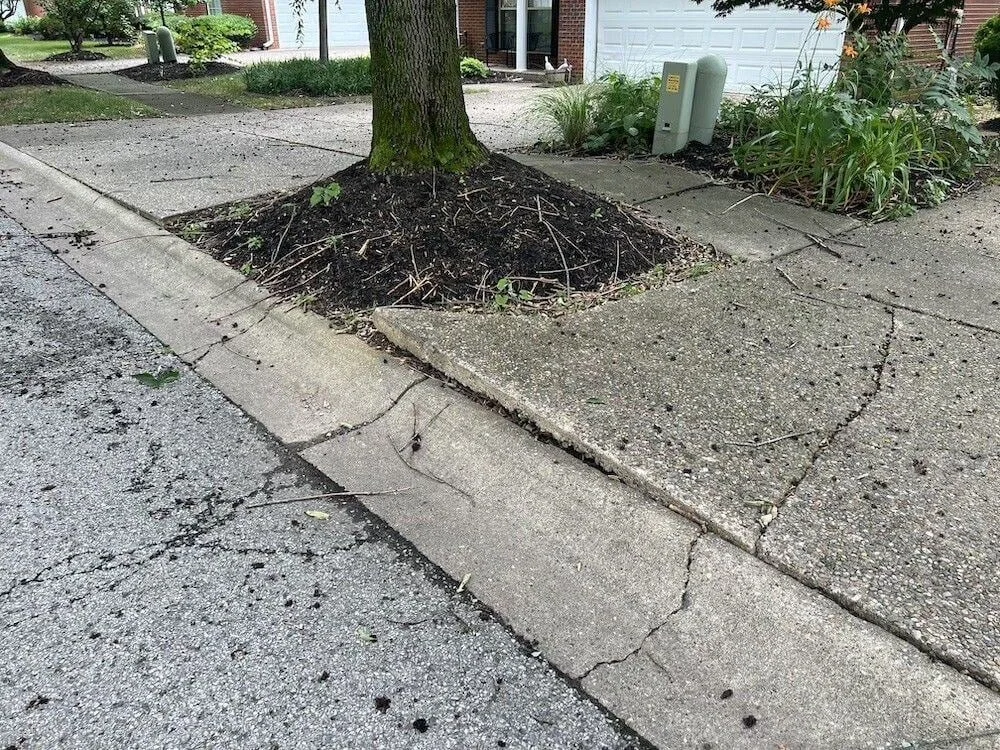Maintaining Concrete
Here at AMC, we’ve worked with concrete and masonry long enough to know they are some of the most foundational elements of construction. We’ve also come to understand that regular maintenance and timely repairs are the most crucial thing for preserving their integrity and lifespan. Below are some expert strategies to help you care for your concrete and masonry surfaces effectively!
A prime example of a damaged sidewalk.
Cleanings to Reduce Stains and Damage
Concrete and masonry are “porous” materials, which makes them susceptible to absorbing dirt, oil, and other contaminants that could cause stains and deterioration. Regular cleaning is crucial:
Sweep and wash: Use a broom or leaf blower to remove any debris left on the stone, followed by a pressure washer blast or stiff brush with some pH-neutral cleaner.
Address any stains promptly: Clean any messes like oil, rust, or mildew as soon as they occur to prevent any possibly permanent discoloration.
Avoid any harsh chemicals: Steer clear of all acidic or abrasive cleaners that can erode the surfaces of your structure and possibly make it weaker than before,
Regular cleaning preserves the aesthetic appeal and structural integrity of all your surfaces. Without it you’re likely to end up with salt stains on the concrete.
Dirty concrete being cleaned by a pressure washer.
Inspect & Repair Cracks Promptly
Cracks, even small ones, can lead to significant issues if left unaddressed:
Regular inspections: Check on your structure every 2 months or so for any visible cracks, chips, or any signs of settling.
Repair minor cracks: If you do Use a concrete patching compound or filler for small cracks.
Seek professional help: For larger or major structural cracks, please consider contacting us for help! It isn’t considered safe to perform maintenance on anything major if you aren’t licensed
A timely repair prevents further deterioration! The earlier you catch the damage the sooner and more easily you’ll be able to handle it.
A sidewalk getting its cracks repaired with concrete sealant.
Manage Vegetation Around Structures
Plants can both beautify and damage the concrete around your home:
Trim vegetation: Regularly cut back ivy, shrubs, and trees near structures.
Monitor root growth: Roots can penetrate and crack masonry; maintain a safe distance between plants and structures.
Control moisture: Overgrown plants can trap moisture against surfaces, leading to mold and deterioration.
Proper vegetation management ensures the longevity of your concrete and masonry surfaces, as well as assisting as a guide for where to place any plants you may desire.
The roots and dirt of a tree pushing the concrete up, cracking and warping it unsafely.
Ensure Proper Drainage
Water is a primary cause of damage to concrete and masonry:
Check your gutters and downspouts: Give them a look and Ensure they direct water away from structures.
Grade your landscape: It’s important that the landscape slopes away from your concrete to prevent water from pooling, excess water means a big chance for mold.
Install drainage systems: Consider French drains or other drainage systems to redirect the water flow underground.
Effective drainage prevents any water-related damage such as cracking and erosion.
A concrete drain flowing with water during a light storm.
Conduct Seasonal Maintenance
Adapting your regular maintenance practices to the changing seasons will further enhance the durability of your surfaces so they last even longer:
Spring: Inspect for damage from the winter months, clean up surfaces, and apply sealants.
Summer: Monitor for signs of Harsh UV damage and address any issues promptly. (Strong UV rays can cause polymers in concrete to break down, causing erosion.)
Fall: Clear leaves and debris regularly to avoid clutter, and prepare your surfaces for harsh winter conditions.
Winter: Avoid de-icing salts; use sand instead, both to prevent surface damage as well as
Seasonal maintenance ensures your surfaces will withstand the varying weather conditions.
Damage on a sidewalk due to the melting ice and salt soaking into the Concrete.
Schedule Professional Inspections
A regular professional assessment can help identify potential issues earlier than normal:
Annual inspections: Having a professional evaluate the condition of your concrete and masonry surfaces once a year
Document findings: Keep records of inspections and maintenance for future reference.
Address recommendations: Follow through on professional advice to maintain structural integrity.
Professional inspections provide expert insight and help in proactive maintenance planning.
These tips could Preserve your Concrete
Maintaining your concrete and masonry surfaces requires regular attention and care. By implementing these provided tips, you can enhance the longevity, appearance, and functionality of many of your structures. Whether it's through cleaning, sealing, repairing, or maybe even getting an inspection, proactive maintenance is key to preserving your investment!
Need an even bigger repair? or maybe you want something entirely new built? Our team is here to help! Contact us today or Call 805-651-9810 to schedule a consultation with one of our Project Managers.
Thank you for reading!






